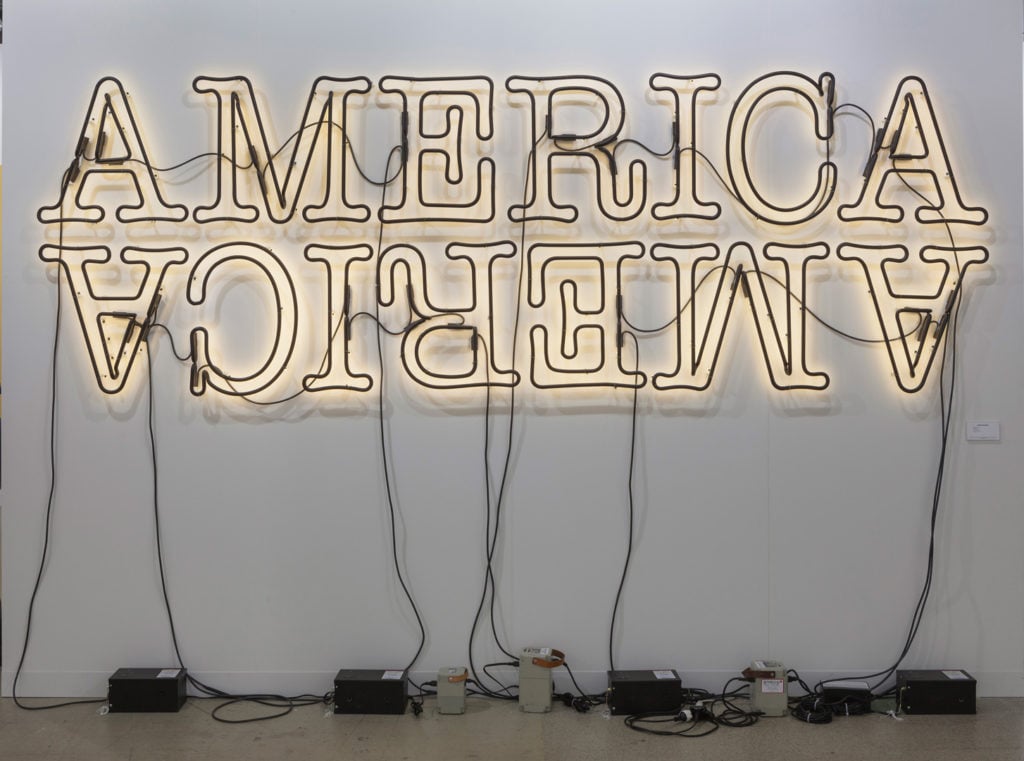The Long Road for African American Artists
Methodology: How We Gathered and Analyzed Our Data
Here's how we gathered and analyzed the data that formed the backbone of our investigation.

Here's how we gathered and analyzed the data that formed the backbone of our investigation.

Julia Halperin &
Charlotte Burns

We teamed up with In Other Words to examine how the representation of African American artists in museums and the market has evolved over the past decade. Below is a detailed breakdown of our approach.
Our data set includes solo exhibitions dedicated to the work of African American artists as well as thematic exhibitions that included work by a majority of African American artists. We considered shows open to the public between January 1, 2008 and September 20, 2018 and excluded one-night-only events such as film screenings and public performances. We defined African American as an individual of African or Afro-Caribbean descent who was born in, raised in, or currently resides in the United States.
The 30 museums in our data set include 13 of the 15 most-attended museums in the United States last year, according to the Art Newspaper’s annual attendance survey, and a mix of smaller urban, suburban, and university museums chosen both for their geographic diversity and the fact that they had demonstrated some level of engagement with American art in general or the work of African American artists in particular.
We have 10 years’ worth of exhibition data for 28 museums; seven years’ worth for one (the Crystal Bridges Museum of American Art in Bentonville, Arkansas, which opened in 2011); and data up to 2018 for another (the Museum of Modern Art in New York). We have 10 years’ worth of acquisition data for 27 museums; eight years’ worth of acquisition data for one (the Museum of Contemporary Art, Los Angeles); and four years of acquisition data for one (MoMA).
We included both purchases and donations of art confirmed as of July 2018 but excluded promised gifts. One museum on our list, the New Museum in New York, is a non-collecting institution and therefore did not submit acquisitions data.
Most of the information was provided by the institutions themselves and verified by our research team. This means the data reflects each museum’s distinct record-keeping practices. Some, for example, record print or photography portfolios as one object, while others count each individual page in the portfolio as a separate acquisition. In select cases where museums were unable to provide a full data set, we gathered the data manually.
The museums we examined have different focuses and scope of collecting. The 19 encyclopedic museums, for example, have broader ground to cover than the institutions solely focused on Modern and contemporary art. Only two of the museums that we surveyed focus exclusively on American art.
The museums we examined are: the Baltimore Museum of Art; the Brooklyn Museum; the Cleveland Museum of Art; the Crystal Bridges Museum of American Art, Bentonville, Arkansas; the Dallas Museum of Art; the Detroit Institute of Arts; the Fine Arts Museums of San Francisco; the Getty Center, Los Angeles; the Solomon R. Guggenheim Museum, New York; the Hammer Museum, Los Angeles; the High Museum of Art, Atlanta; the Hirshhorn Museum and Sculpture Garden, Washington, DC; the Los Angeles County Museum of Art; the Metropolitan Museum of Art, New York; the Museum of Contemporary Art, Chicago; the Museum of Contemporary Art, Los Angeles; the Museum of Fine Arts, Houston; the Museum of Fine Arts, Boston; the Nasher Museum of Art at Duke University, Durham, North Carolina; the National Gallery of Art, Washington, DC; the National Portrait Gallery, Washington, DC; the Nelson-Atkins Museum of Art, Kansas City; the New Museum, New York; the Pennsylvania Academy of the Fine Arts, Philadelphia; the San Francisco Museum of Modern Art; the Seattle Art Museum; the Smithsonian American Art Museum in Washington, DC; the Studio Museum in Harlem, New York; and the Virginia Museum of Fine Arts in Richmond.
The bulk of the market data was provided by the artnet Price Database and reflects auction results from more than 400 auction houses worldwide from January 1, 2008 to August 14, 2018. The database only includes items with a low estimate of $500 and above. All sales prices are adjusted to include the buyer’s premium. Price data from previous years has not been adjusted for inflation. All results are logged in the currency native to the auction house where the sale took place, then converted to US dollars based on the exchange rate on the day of the sale. Further data was provided by the Sotheby’s Mei Moses index, an analytic tool based on repeat auction sales of individual objects.
Once the data was in, we analyzed it internally and then interviewed more than 30 people—a mix of museum directors and curators, collectors, dealers, advisors, and academics—for their reactions, insights, and context.
To read the articles in this series, see our examination of museums; our examination of the market; three case studies on artists from three different generations; and visualizations of our findings.